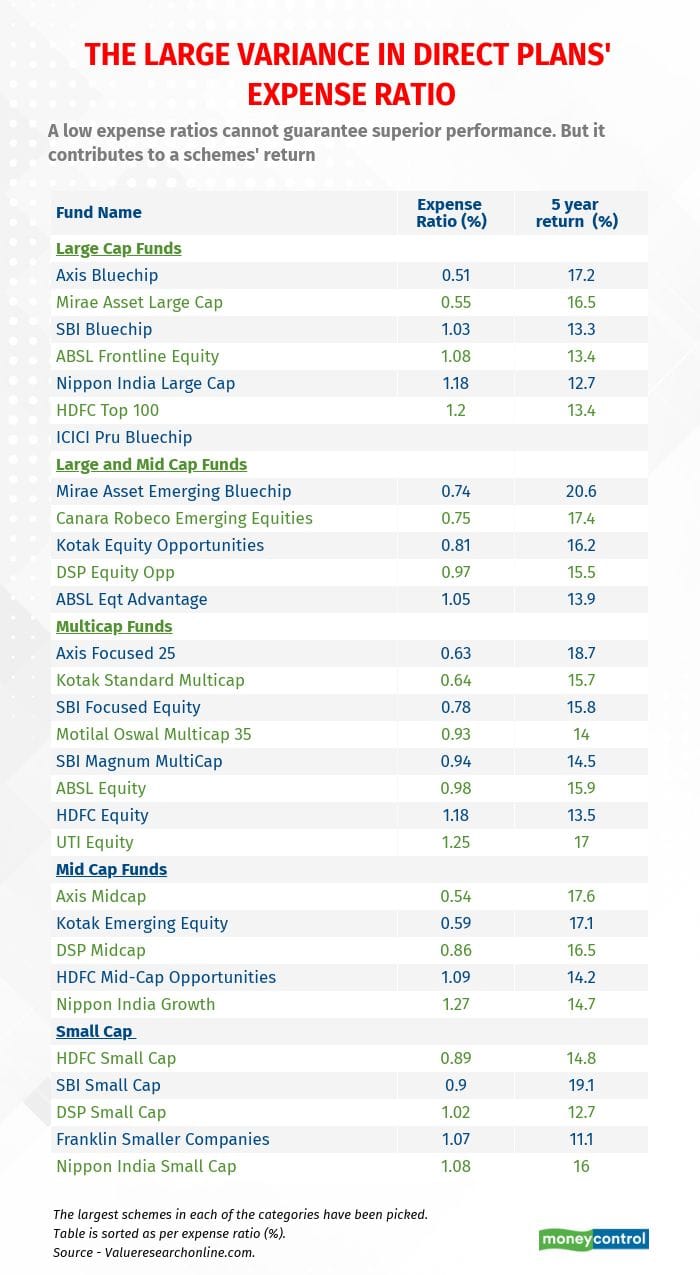If you wish to invest in the direct plan of a mutual fund, just choosing an option is not enough. Even within direct plans of several equity fund categories, there is a large variation in expense ratios.
Roughly 45 percent of the entire mutual fund industry assets under management now lies in direct plans. This includes debt and liquid funds. Direct plans come with lower costs. Unlike regular plans, you can invest directly, without needing a distributor. In doing so, you save on the commission that would have otherwise been paid to the distributor and added as to the expense ratio of the scheme.

For individual investors the tilt remains towards investing through distributors. Around 81 percent of equity assets come from regular plans.
Does expense ratio matter?
Let’s say you have the choice of investing in two schemes with similar large-cap equity portfolios from two different fund houses. The average five-year rolling return of Scheme A is 10 percent and for Scheme B, it’s 11 percent, both annually. Over a period of, say, 10 years the difference in return can be roughly 10.47 percent on your entire investment and that is a significant amount.
Now let’s say the direct plan expense ratio for Scheme A is 1.2 percent and for Scheme B it is 0.5 percent. The difference in cost or expense ratio among the two schemes is 70 basis points a year; this also means that more than half of the 10 percent difference in the final return is the result of a higher expense ratio.
A lower expense ratio does help a scheme’s performance.
Expense ratios can change
Expense ratios of mutual funds are subject to change, once in a while. But why would the direct plan expense ratio change? According to an industry senior executive, who didn’t want to be quoted, “This is a derived cost. You get a direct expense ratio after deducting distribution commissions from the total expense ratio of a scheme. The formula and calculation are prescribed by the regulator.”
This means, the direct plan expense ratio can’t change by itself. If commissions are lowered, the direct plan expense is higher and vice versa.
It is also true that a number of asset managers are now putting more resources behind servicing and sourcing of direct investors and, hence, the cost dynamics are witnessing a shift.
Why does it matter to the investor?
If you invested in the direct plan to save cost, you should know that even a five basis point change in expense will impact your long-term return negatively. One such change may not add up to a lot, but recurring adjustments upwards will eat into your return substantially.
Keep an eye out for this kind of ad-hoc change in your direct plan expense ratio and make sure that it doesn’t creep up on you over the years. Ideally, as scheme sizes increases, expense ratios tend to get lower.
Equity investing, especially through mutual funds is a very long-term transaction. Ideally, you should pick a scheme and stick to it for at least five years; the longer the better. Just as returns compound over time, high costs also compound and eat into your returns.
If you don’t have the time, expertise and inclination to manage your investments, a financial advisor can help in picking quality schemes.